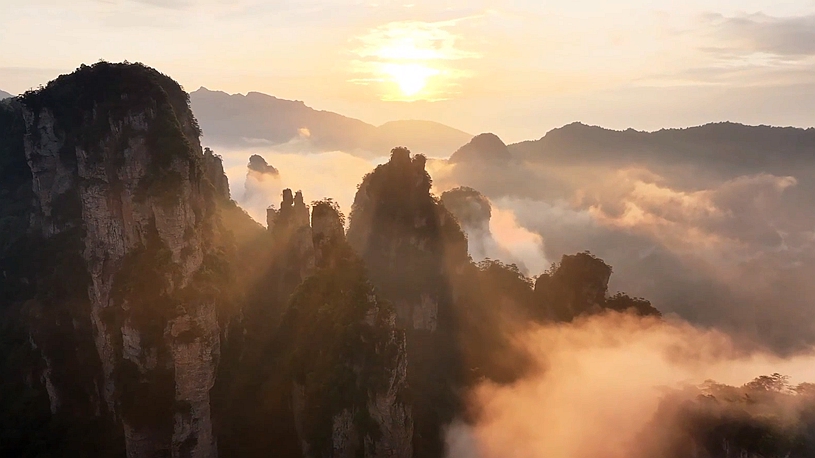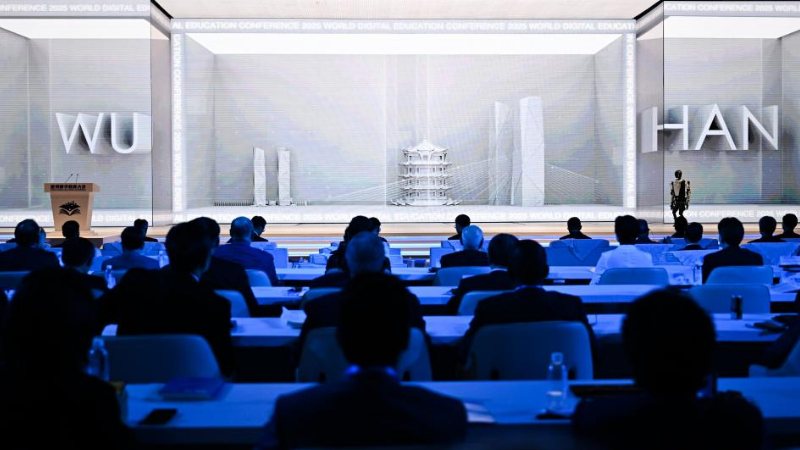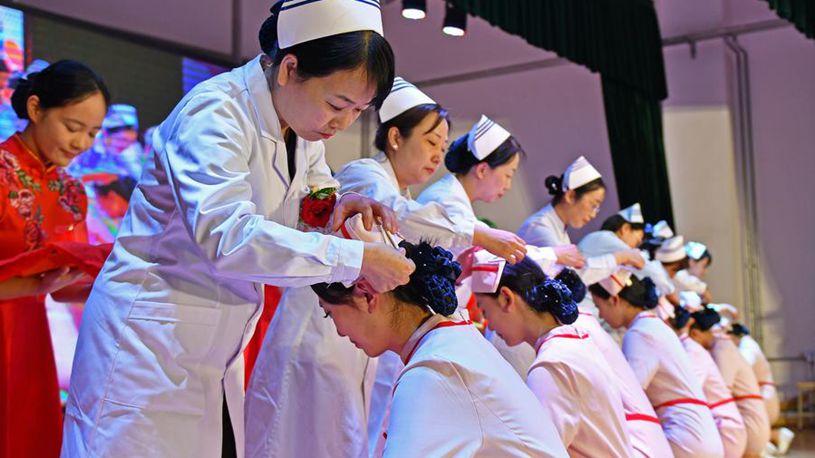Xinhua Headlines: How tech, tradition are reshaping China's 120-year film legacy
Source: Xinhua
Editor: huaxia
2025-05-16 22:17:31
* From silent films to AI-driven blockbusters, China's 120-year cinematic journey has been one of relentless innovation. The industry now merges cutting-edge tech with its 5,000 years of rich culture, creating visually stunning narratives that resonate globally.
* Technological advancements are being embraced by an increasing number of Chinese films, including AI animation, virtual cinematography and 3D printing.
* Chinese filmmakers are reviving the country's ancient myths and retelling them to a global audience. Even films not explicitly rooted in tradition now channel Chinese philosophy.
JINAN, May 16 (Xinhua) -- In 1905, a hand-cranked camera in a Beijing photography studio captured a historic moment: Peking Opera master Tan Xinpei performed as a general in Dingjun Mountain -- China's first film -- marking the dawn of a storytelling revolution for the oriental nation with its silent, 30-minute reel.
Today, inside a virtual production studio, stunt performers duel before towering LED screens, their movements tracked by AI-powered motion capture. Every gesture, from a sword swing to a battle cry, is rendered in real time into hyper-realistic digital epics, where ancient warriors clash amid storms of fire and lightning. The line between reality and imagination has dissolved.
From silent films to AI-driven blockbusters, China's cinematic journey has been one of relentless innovation. The industry now merges cutting-edge tech with its 5,000 years of rich culture, creating visually stunning narratives that resonate globally.
TECH MEETS MYTHS
"Ne Zha 2," this Spring Festival smash hit that fuses AI animation with deep-learning emotion synthesis, has captivated audiences with its breathtaking visuals and the tale of the rebellious god Nezha and his ally fighting to reclaim their bodies. It became China's highest-grossing film of all time and climbed to fifth place on the global box office chart.
The latest Chinese blockbuster hit cinemas nearly two years after "The Wandering Earth 2," a dazzling sci-fi epic adapted from Hugo Award winner Liu Cixin's novel, raked in over 100 million yuan (about 13.9 million U.S. dollars) at the overseas box office. Its awe-inspiring visuals, such as sky-piercing space elevators powered by massive fusion reactors, showcased China's prowess in industrial-grade 3D-printed props and precision computer-generated imagery.
Guo Fan, director of "The Wandering Earth 2," credited China's sci-fi film boom to technological leaps.
"In particular, breakthroughs in 3D printing and computer numerical control machining have elevated prop precision to industrial-grade standards," he said.
For "The Wandering Earth 2," production teams leveraged 3D printing to create intricate spacesuits, quantum AI computers and robotic arms, dramatically reducing production time while maintaining cinematic-quality details.
Innovation, however, went far beyond props. At China Movie Metropolis, in Qingdao of east China's Shandong Province, a state-of-the-art underwater studio equipped with three vast water tanks -- holding a combined 11,000 cubic meters -- enabled the creation of hyper-realistic aquatic scenes. The studio's crown jewel is a 210-square-meter indoor stage capable of simulating everything from sinking vehicles to towering tidal waves.
"The marine facilities are world-leading," said David Godfrey, director of international operations of Pinewood Studio Group, praising the heated, filtered water tanks and colossal exterior blue-screen pool.
Cutting-edge technological advancements are being embraced by an increasing number of Chinese films. "Assassin in Red," a fantasy film about an adventure shuttling between the real and magical worlds, pioneered virtual cinematography in China, while "Creation of the Gods," a Chinese epic fantasy film trilogy featuring heroic battles against evil forces, employed motion capture and Hollywood-style pipelines to standardize production. Chinese visual effects studios are increasingly emerging as global players, contributing to major international blockbusters.
Chung Kim-Wai, a senior set and prop designer from Hong Kong, believes that China's film industry has reached new heights of industrialization by mastering three core elements, which include the streamlined production pipelines, precision in artistic craftsmanship, and superb blending of digital imagery with practical filming.
CULTURAL ROOTS, UNIVERSAL STORIES
Beyond technology, Chinese filmmakers are reviving the country's ancient myths and retelling them to a global audience.
Recent standout titles -- like the "Ne Zha" series, the "Creation of the Gods" series, and "Chang'an San Wan Li" -- have all adapted ancient Chinese legends and stories using contemporary narrative techniques and cutting-edge visuals.
Zhao Bin, deputy director of the China Film Culture Institute at Beijing Film Academy, attributed the success of "Ne Zha" partly to its fusion of "traditional cultural appeal with modern cinematic aesthetics."
Director Yang Yu, also known as "Jiaozi," devoted five years to perfecting "Ne Zha 2." He even mastered martial arts to choreograph fight scenes that balance authenticity with dramatic flair.
Similarly, "Creation of the Gods" director Wuershan led his team to museums and historical sites, mining China's artistic heritage to craft the trilogy's distinctive visual language. The actors and actresses also underwent six months of intensive training in ancient history, social etiquette, and skills from horseback riding to stunt combat.
Wuershan said he hoped to present China's rich traditional culture and artistic legacy to audiences around the world through a modern creative lens and cinematic language. "So people can transcend geographical, linguistic, and cultural barriers and connect emotionally with my movies."
Even films not explicitly rooted in tradition now channel Chinese philosophy.
Wang Yuhua, an associate professor at Beijing Film Academy, cited "The Wandering Earth" as an example, noting that its premise -- humanity moving Earth itself to survive, rather than abandoning it -- reflects the deep-seated cultural bond between people and homeland.
As the world's second-largest film market, China is playing an increasingly influential role in reshaping the global cinematic landscape. In 2024 alone, China hosted international film festivals in more than 30 countries and regions. Meanwhile, China screened 93 imported films last year, and raked in over 9 billion yuan at the domestic box office.
The industry's rising stature shows in critical recognition. Apart from its strong performance in domestic box office, "Ne Zha 2" garnered widespread praise from French audiences and critics following its April release across over 200 theaters in major cities like Paris and Bordeaux.
Kang Yoon Ki, head of the KBS Producers and Directors Association from the Republic of Korea, commended the growing partnership between the two countries in both film technology and narrative innovation.
"We look forward to deepening this collaboration to bring even higher-quality content to audiences around the world," he said. Enditem
(Video reporters: Wang Huan, Wu Feizuo; Video editors: Zhang Yucheng, Roger Lott and Hui Peipei.)■










Comments